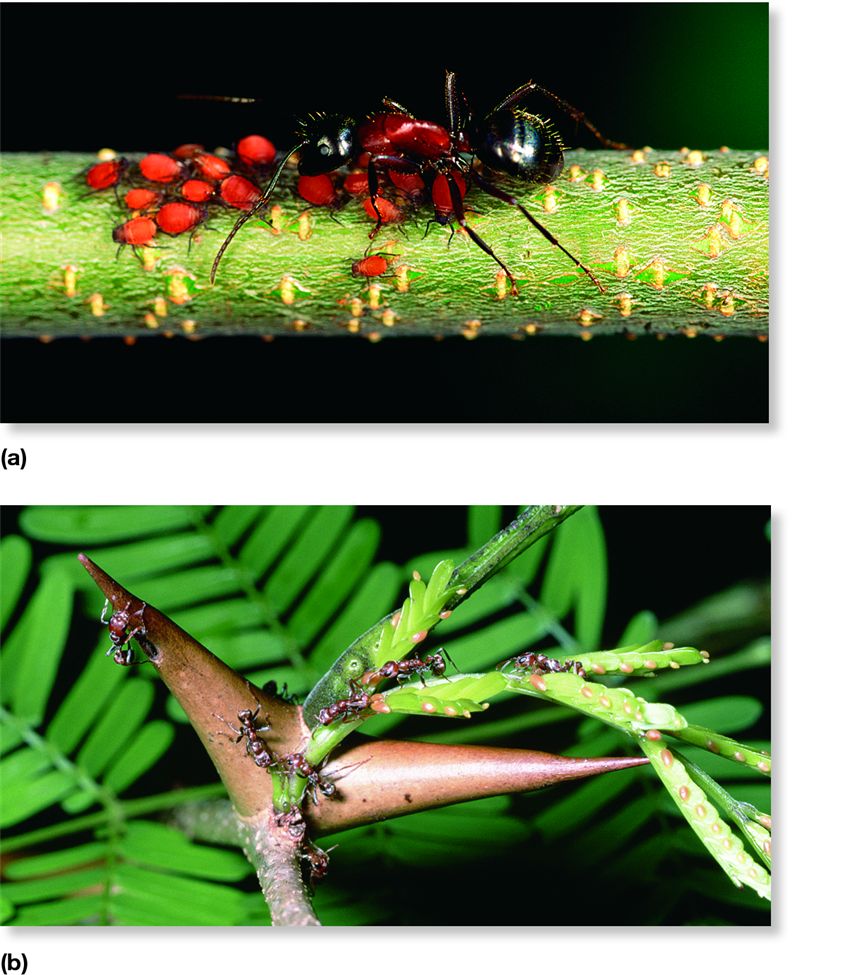 |
| Previous Image | Next Image |
| Description: (a) This red carpenter ant, Camponotus pennsylvanicus, tends aphids feeding on a twig. The ants receive sugar-rich honeydew produced by the aphids and in return they protect the aphids from predators. (b) Ants, usually Pseudomyrmex ferruginea, make nests inside the large, hornlike thorns of the bull's horn acacia and defend the plant against insects and mammals. In return, the acacia (Acacia collinsii) provide two forms of food to the ants: protein-rich granules called Beltian bodies and nectar from extrafloral nectaries (nectar-producing glands that are physically apart from the flower).
Picture Stats: Views: 3577 Filesize: 127.5kB Height: 975 Width: 850 Source: https://biology-forums.com/index.php?action=gallery;sa=view;id=1416 |
